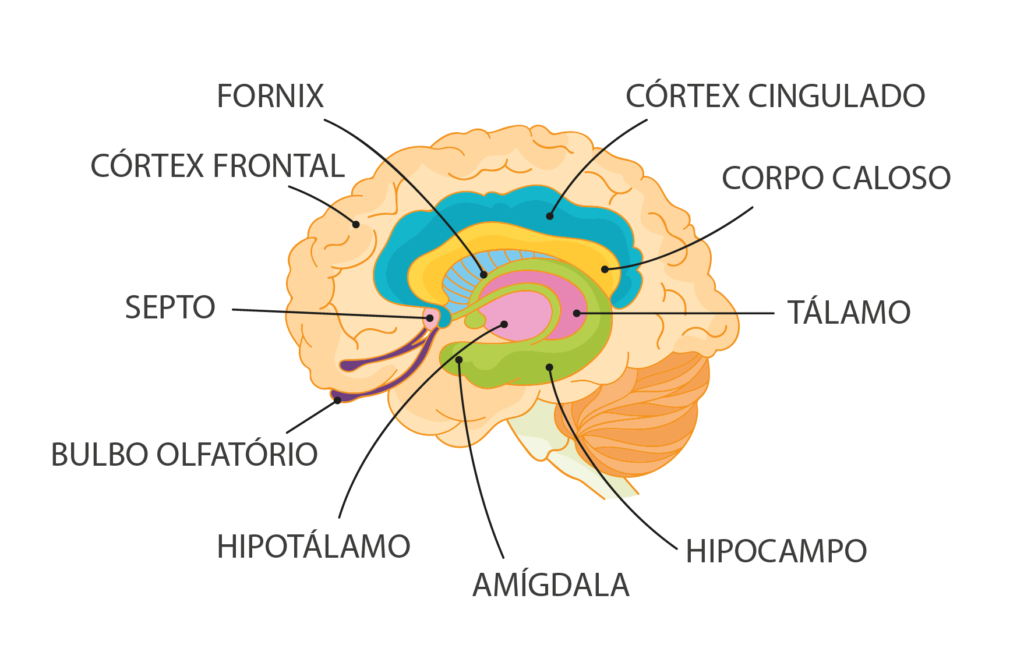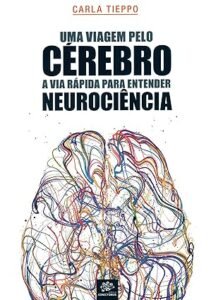Limbic System: what it is and how it works

|
Getting your Trinity Audio player ready...
|
The limbic system is a fundamental part of our brain that plays a crucial role in our emotions, memory and behavior. Although it is known as the limbic system, the correct term used in Neuroscience is the integrative system.
Often referred to as the “emotional brain,” it plays a vital role in our daily lives, even if many of us aren’t aware of it. In this article, we’ll explore what the limbic system is and how it works to influence our emotional experience.
What is the limbic system?
The limbic system is a complex structure of the human brain, responsible for regulating emotions, behaviors, memory and even some physiological functions related to instincts and survival. It acts as an “emotional center”, processing sensations such as pleasure, fear, anger and sadness. In addition, it is directly involved in the formation of memories and the response to stress.
The limbic system includes the hippocampus, amygdala, hypothalamus, and cingulate gyrus, structures that play a vital role in processing emotions, forming memories, and controlling our behavior.

The functions of the limbic system
The limbic system plays a central role in processing emotions. It allows us to feel a wide range of emotions, from joy to fear.
Thus, it plays an important role in psychological conditions such as anxiety, depression and post-traumatic stress disorder (PTSD). This is because the structures of this system, especially the amygdala, are sensitive to stressful situations and can amplify emotional responses.
Additionally, the hippocampus, a part of the limbic system, is crucial for memory formation and learning. The limbic system also influences our behavior by controlling our emotional responses to external stimuli.
Because it is so central to what we feel and how we react to the world, the limbic system is the target of studies in areas such as neuroscience, psychology and NLP (Neuro-Linguistic Programming), seeking to improve emotional balance and human performance.
Amygdala: processing emotions
The amygdala, a small structure within the limbic system, plays a key role in processing emotions, especially those related to fear and stress response. It consists of two small, almond-shaped masses of tissue, one in each cerebral hemisphere.
Thus, it acts as an alarm, detecting potential threats in the environment and preparing the body to react, accelerating the heart rate and releasing stress hormones.
The functions of the amygdala include:
1. Emotional processing:
The amygdala is involved in recognizing and interpreting emotions in other people's facial and vocal expressions. It plays a crucial role in generating emotional responses such as fear, anger, and pleasure.
2. Emotional learning:
The amygdala is involved in forming associations between stimuli and emotions. It plays an important role in learning emotional conditioning, such as classical conditioning.
For example, if someone has a traumatic experience, the amygdala may associate that trauma with specific environmental stimuli, causing the person to develop conditioned emotional responses to those stimuli.
3. Regulation of the fight or flight response:
The amygdala is crucial for activating the “fight or flight” response in situations of perceived danger. Therefore, when the amygdala detects a threat, it triggers a series of physiological responses, such as increased heart rate, release of stress hormones and increased vigilance.
4. Integration of sensory information:
The amygdala receives sensory information from several regions of the brain, including the cerebral cortex, thalamus, and hypothalamus. This sensory information contributes primarily to the evaluation of stimuli and situations.
5. Regulation of social behaviors:
The amygdala is also involved in social behaviors, such as interpreting social cues and regulating emotional responses during social interactions.
Hypothalamus: regulation of behavior and bodily functions
The hypothalamus is a small region of the brain located below the thalamus and above the pituitary gland. Despite its size, it plays a crucial role in several vital functions of the body, including hunger, thirst, body temperature and circadian rhythms (related to our sleep).
Additionally, it plays a key role in the release of hormones that affect our emotional state and behavior. These include stress hormones such as cortisol and growth hormone.
Its main functions include:
1. Regulation of body temperature:
The hypothalamus acts as the body's internal thermostat, helping to regulate body temperature. It detects changes in temperature and triggers physiological responses, such as sweating or an increased heart rate, to keep the temperature within a normal range.
2. Regulation of water balance:
The hypothalamus controls thirst and urine excretion, ensuring that the body maintains the proper balance of fluids and electrolytes.
3. Control of appetite and satiety:
It is involved in regulating hunger and feelings of fullness, monitoring blood glucose levels and levels of food-related hormones such as leptin to determine when you are hungry and when to stop eating.
4. Regulation of circadian rhythms:
This is where the body's internal biological clock is controlled, influencing circadian rhythms such as sleep-wake cycle. In this way, the hypothalamus regulates the production of melatonin, the hormone that controls sleep.
5. Endocrine functions:
The hypothalamus is closely linked to the pituitary gland, an important gland in the endocrine system. As such, it secretes releasing and inhibiting hormones that control the release of hormones by the pituitary gland, which in turn affects other endocrine glands in the body.
6. Regulation of emotions:
Another important function is related to emotional responses, such as fear, pleasure and stress. In other words, it is interconnected with other areas of the brain involved in emotions.
The hypothalamus is an essential region for the body's homeostasis, which is the ability to maintain a balanced and stable internal environment regardless of changes in the external environment. Therefore, it is a critical part of the nervous system that regulates many vital functions of the body.
Thalamus: connection and integration of sensory information
The thalamus is a brain structure located at the top of the brain stem, in the central region of the brain. It is a crucial part of the central nervous system and plays a key role in sensory processing and regulating consciousness.
The thalamus acts as a “relay center” for sensory information entering the brain. It then receives sensory signals from various parts of the body, such as the eyes, ears, skin, and internal organs, and directs them to specific areas of the brain for further processing. For example, visual information captured by the eyes is transmitted to the thalamus, which in turn sends this information to the visual part of the cerebral cortex, where vision is processed.
Furthermore, the thalamus also plays an important role in regulating the sleep-wake cycle and consciousness. Thus, it influences attention, alertness and the ability to concentrate.
Cingulate gyrus: social emotions and empathy
The cingulate gyrus is a part of the limbic system that plays an important role in processing social emotions and empathy, located on the inner surface of the cerebral hemispheres, around the corpus callosum.
It is a part of the cerebral cortex, the outermost layer of the brain responsible for higher cognitive functions. Therefore, it allows us to understand and respond to the emotions of others, which is essential for successful social interactions.
The cingulate gyrus performs several functions, including:
1. Emotional regulation:
It is involved in the processing and regulation of emotions, as well as in the response to stress. It also plays a role in the evaluation of rewards and motivation.
2. Memory functions:
The cingulate gyrus has connections to other areas of the brain involved in the formation and retrieval of memories, as well as playing a role in working memory, which is the ability to temporarily hold information in mind.
3. Attention and focus:
It is associated with sustained attention and control of cognitive processes, helping to maintain focus on tasks and the ability to switch between different activities.
4. Pain processing:
The cingulate gyrus is involved in the perception and processing of pain. In particular, it plays a role in the regulation of chronic pain.
5. Executive functions:
It is also involved in executive functions such as decision making, planning, inhibitory control, and problem solving.
The Hippocampus: the formation of memories
One of the best-known functions of the limbic system is memory formation. The hippocampus, a seahorse-shaped structure located in the temporal lobe, is responsible for converting short-term information into long-term memories.
Therefore, without the hippocampus, we would not be able to learn from our experiences and remember past events.
In short…
In short, the limbic system is an essential part of the human brain that influences our emotional experience, memory formation and behavior.
Understanding how it works can help us better understand our own emotions and social interactions. The limbic system plays a significant role in our daily lives, and its complexity and importance continue to be a focus of research in neuroscience.
Recommended reading:
Image: Freepik
Article originally published on 10/12/2023 and updated on the date above.

Marcel Castilho is an expert in neuromarketing, neuroscience, mindfulness and positive psychology. In addition to being an advertiser, he also has a Master's degree in NLP – Neurolinguistic Programming. As the owner and founder of the communications agency VeroCom and also of the digital agency Vero Contents, he has been studying human behavior for over 30 years.




